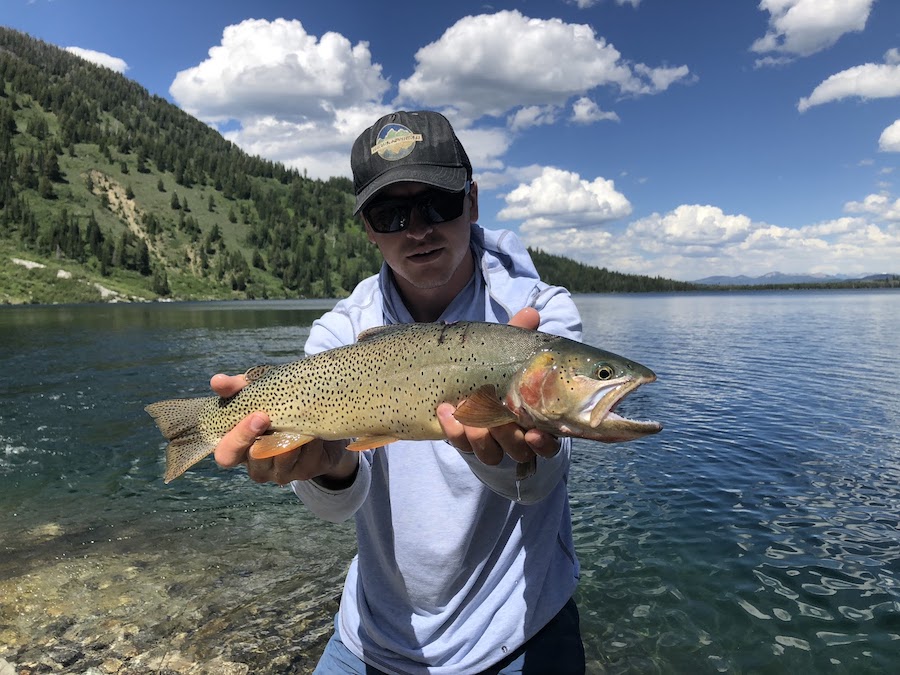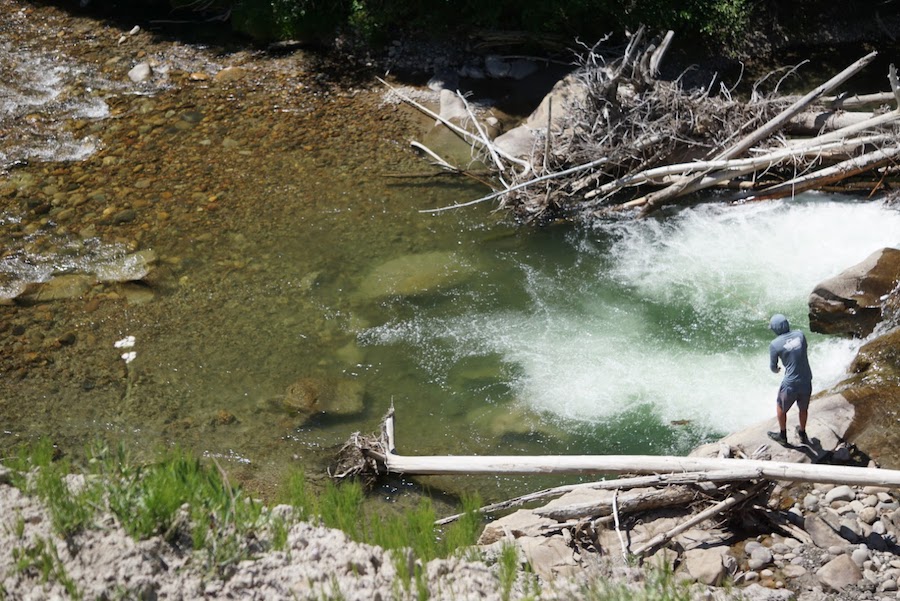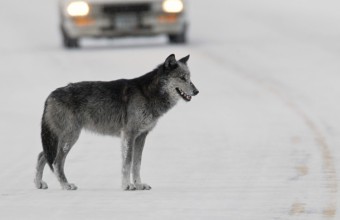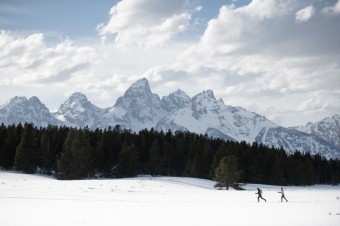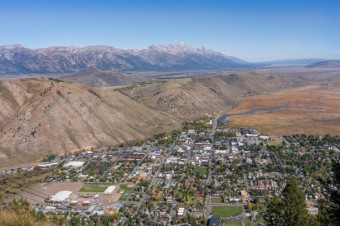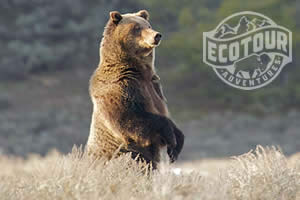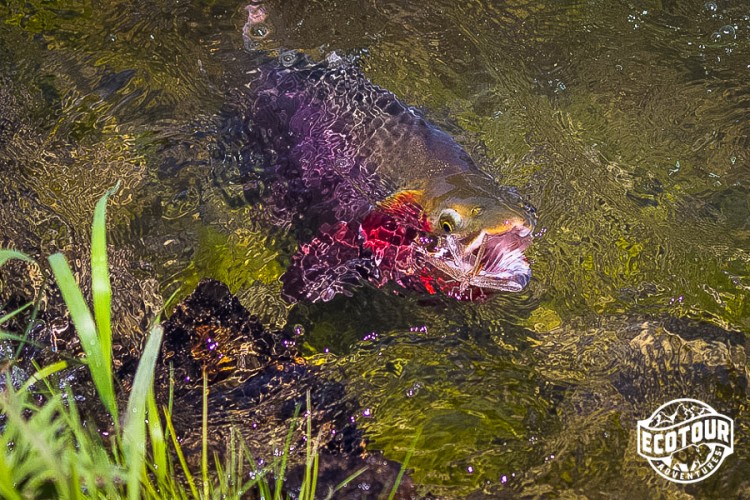
Do you love fly fishing, but would rather go it alone than hire a guide? There is a certain feeling of personal pride that can be taken from a successful DIY fishing trip. The key, however, to a successful excursion is proper preparation and knowledge of the area. Grand Teton National Park offers anglers numerous opportunities to target trout in pristine rivers and lakes beneath soaring mountains. In these waters, you will find native cutthroat, brown, rainbow and lake trout. Here are some ideas of where to go.
The Snake River and its Tributaries
Meandering about 27 miles through the Jackson Hole Valley and Grand Teton National Park, the Snake River not only offers stunning panoramic views of the Tetons, but world class fishing. A braided freestone river like this one can be a DIY fisherman’s best friend, with endless riffles, runs, holes, and confluences explore. From the Moose Visitor Center, an unmarked trail heading south along the river’s edge will reveal miles of productive water. Spend some time working smaller channels that drift boats may have passed up on their way downriver.
The Snake River can be big and intimidating. For those looking to find smaller, more manageable water, look no further than the Spread Creek. This tributary to the Snake River gets less fishing pressure as it is too small for drift boats carrying guides and clients. By late June the cutthroat trout inhabiting this water are willing and eager to rise to a fly. Don’t be afraid to travel further upstream to find some solitude. Typically the further you hike away from the roads, the less people you will see, and the better the fishing gets! Remember to be bear aware and have bear spray accessible at all times when you fish in Jackson Hole, Grand Teton and Yellowstone, you’re in grizzly country!
Want flyfishing instruction? We recommend JH Flyfishing School.
Lakes in Grand Teton National Park
If you are visiting in the early Summer, you may find that the local rivers are rushing with spring melt off from the mountains. These rivers will be very difficult and dangerous to fish but don’t worry, there are seven lakes along the base of the Teton range harboring sizable trout. Over the past 2.5 million years, glaciers have carved canyons in between these mountains which are consistently carrying cold, nutrient-rich water from the mountains to the lakes at their bases.
The Phelps Lake inlet can best be accessed by following the Whitegrass Ranch Road, eventually reaching the Death Canyon trailhead. Fortunately, this canyon is not as dangerous as it sounds. A short hike leads you up and over the glacial moraine that contains Phelps Lake. At the lake’s westernmost point, where it is closest to the mountains, an ice-cold stream from Death Canyon pours into Phelps Lake. Cutthroat and lake trout spend their time here enjoying the oxygenated water and the food it carries with it.
A few miles north of Phelps Lake you will find Jenny Lake sitting beneath Cascade Canyon. This lake is one of the most popular places in the park for its breathtaking views and trailhead access. Parking north of Jenny Lake, at String Lake, you can follow a trail that leads you to where these two lakes meet. String Lake slowly flows into Jenny Lake, providing cold water and nutrients for cutthroat trout. Casting streamers towards this inlet can be quite productive.
A native cutthroat trout caught at Jenny Lake
Gear to Bring
The four most essential items to have with you while spending time flyfishing in Grand Teton National Park are bear spray, warm layers, water, and food. These are three things that might save your life. While bear attacks are uncommon in GTNP, seeing a bear is not. So make sure it is always accessible, just in case. I recommend carrying bear spray where you can deploy it without taking it out of the holster, such as attached to your belt or a chest fishing harness. Learn more about safety in carnivore country here.
In Wyoming, it is always a good idea to bring layers. The weather can change dramatically so always make sure to have a rain jacket and a warm layer. Avoid cotton when thinking about what to wear/pack. Cotton will take a long time to dry if wet and will not keep you warm. Another must-have item is a full water bottle, or two. The high elevation and dryness of this climate will dehydrate you quickly.
In my fly-box there are three flies that I always want to have with me, chubby Chernobyls, pat’s rubber legs, and the lil’ kim. While these trout will take a variety of artificial flies, you may find success using chubby Chernobyls because they can look simply irresistible. Chubbys may imitate a variety of terrestrial bugs, or may simply serve as an attractor that an opportunistic trout can simply not resist. For trout feeding subsurface, a pat’s rubber legs is always a good choice as it can imitate local stone and salmon flies. It looks downright buggy and delicious. Lastly the lil’ kim, found in fly shops in Jackson, is a streamer that looks natural enough to imitate a small bait fish or leach, with just enough flash to entice a trout to strike.
Search for deep pools when fishing smaller creeks.
Fishing Licenses and Regulations
Fishing in Wyoming will require a license for residents and nonresidents over the age of 14. Licenses can be purchased online and at a number of fly fishing shops in town. You will have the choice to buy a day or annual license. If you are a non-resident and plan on fishing more than 7 days, the economical choice would be to purchase the annual license. This license will not cover Yellowstone National Park and Reservation land. Make sure to research seasonal closures and regulations before fishing any body of water. When you purchase a fishing license, it is not a fee, but a contribution. Your money will help fund fishery management, hatchery programs, invasive species programs, and conservation education.
Catch and Release
Keeping fish can be a rewarding experience, but make sure that you have thoroughly reviewed the regulations as they will vary from one location to another. For example, when fishing lakes inside Grand Teton National Park you may keep 6 trout per day, no more than 3 cutthroat trout, and no more than 1 cutthroat trout exceeding 12 inches. While fishing the rivers in Grand Teton National Park, you may keep 3 trout, no more than 1 exceeding 16 inches.
For many anglers releasing fish is the preferred practice. If you decide that you would like to release your fish, it is important to follow a few steps to ensure the safety and health of the fish once released. First, try to land the fish as quickly as possible which will reduce the amount of stress placed on the fish. Next, you will want to keep the fish in the water as much as possible when handling. This fish has just undergone what it suspects to be a fight for its life, so the fish may be exhausted. When handling the fish use wet hands and knotless, rubberized nets. This will help protect the slime layer covering the fish. This layer is essential in protecting the fish from infection and aids in swimming. Lastly, when returning the fish to the water, hold the fish horizontally with its head upstream. The fish may depend on you for this sort of support as it takes a moment to recover from the fight, especially as water warms later in the summer. If you find that the fish will not survive, consider harvesting it if this falls into line with the local rules and regulations.
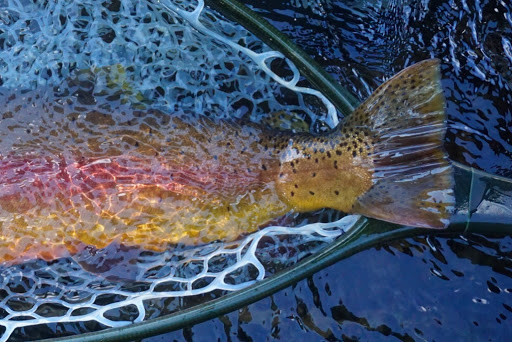
Cutthroat trout in a knotless rubberized net
Why Fishing is Conservation
Fishermen and hunters are some of the original conservationists. These people have, and will continue, to advocate for the protection of public lands, environmental laws and regulations that help sustain their passions. By encouraging more folks to get out and enjoy their local waters, it is possible to cultivate more conservationists, more people that will advocate for the protection of their resources. In many ecosystems trout are a keystone species, meaning that they are a vital piece of the puzzle. The removal of such a species would change an ecosystem drastically. When we advocate for healthy waters and fish populations, the entire ecosystem will benefit.
For many, those who are drawn to the grandeur of Grand Teton National Park will eventually find themselves in Yellowstone National Park. Here fisherman can find rivers lined with hot springs and bison, or Yellowstone cutthroat trout of trophy proportions. In the next EcoTour Adventures Blog we will explore how to safely and effectively fish the land of “fire and brimstone”.
EcoTour Adventures Guide Kirk Ryder, originally from Massachusetts, developed an intense curiosity and interest in the outdoors spending his summers in the Berkshire Mountains. His college years lead him through the Adirondacks to St. Lawrence University where he studied environmental science, government and served as vice president to the Hunting and Fishing Club. During these college summers Kirk made his first visit to Wyoming to work for Teton Valley Ranch Camp. It was here that Kirk fell in love with the Greater Yellowstone Ecosystem, leading backpacking trips and fly fishing trips. Now situated in Jackson, Kirk spends his free time backcountry skiing, hiking, fishing and rafting. Kirk’s excitement for outdoor education and sharing it with others is a terrific combination as he seeks to inspire others to better understand the natural world and what it means to be a part of the GYE.


